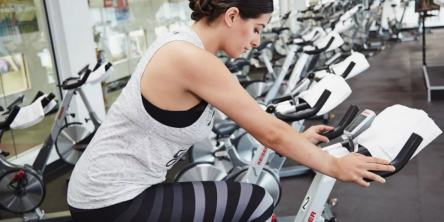8 Tips for Better Cycling
All of us have our reasons for exercising. For many folks, routinary workouts are only one component of a journey to a trimmer, fitter and healthier body. But aerobic workouts such as riding an exercise bike have many other advantages aside from calorie-burning.
Riding stationary bikes allow you to lose unwanted weight, gain muscle, all of the while exerting less stress on your joints and knees. Additionally, there is the extra benefit of indoor biking wherever you want, and you can expect to be unaffected by the sweltering outside heat along with other adverse weather conditions.
I am positive you’ve looked at other exercise bikes online and also have considered a few available for sale. Before you jump on the bike, listed below are 8 helpful pointers which may assist you on your path to a healthier, and fitter body.
1. Adjust the seat
Don’t forget to adjust the bike seat before climbing onto it. The exercise bike might have been configured for a taller or shorter person, putting you at a great disadvantage.
Make sure your legs are perfectly straight when the pedal reaches its lowest point. An improperly configured seat, either too high or too low, can pose fitness inefficiencies that may make you more tired while biking and also making the workout more trying for your own knee joints.
2. Check your alignment
Hands on the handlebars and start cycling. See if you will find any awkward pressure on your fingers or on your own wrists. If there are, shift weight back into the legs and also assess if it’s more comfortable.
If you’re able to see yourself in a mirror, then prepare yourself for the right posture. You ought to be a bit hinging forwards from the waist, with just slight pressure on your back, knees and wrists. Attempt to keep your spine level and never hunched.
3. Use your head
Let your imagination run loose, as they say. Cycling all on your own, even with the company of music, may become dull after a time. It is helpful to imagine a scenario whilst working on the fitness bike.
Enjoyable mindscapes include engaging in a triathlon, a weekend trip to the shore, or an afternoon run across the country. Not only are you currently training your own body, you are also exercising your mind.
4. Wear the correct gear
Light sneakers and a comfy pair of jogging pants or capris are nice while starting out, but when if you want to become more serious and want to make biking a part of your routine, you need to put money into proper equipment like biking shoes and bike shorts. Cycling shoes move onto the pedals to prevent slippage and enable better traction.
5. Be honest
Stick with a routine and don’t cheat yourself. If you plan was to cycle for an hour at a set resistance, do not detract from that plan unless you’re legitimately hurt or tired.
You have no one but yourself to keep up the motivation and cutting back on the runtime or lowering the bicycle resistance may not give you the advancement that you want.
6. Slowly raise resistance
Push yourself to your limits and slowly crank the resistance up. Cycling at a consistent rate and resistance will help your muscles “remember” the workout, reducing the value of the exercise later on.
Alternating between quick pedalling and slow long rides also strengthens your thighs longer. An example format is riding as quickly as you can for two minutes, the slowing down for one minute, then do it all over again.
7. Stand
You do not have to limit yourself to sitting while cycling. Once every so often, stand up while biking and strive not to lean forwards. Your posture should be as straight and close to your seated position as you possibly can.
8. Drink lots of water
Never forget to drink water while biking. Aerobic exercises burn up a lot of calories but also force you to lose a lot of water from the process. Forgetting to drink water when riding an exercise bike may lead to a short run time, exhaustion, and even dehydration.


